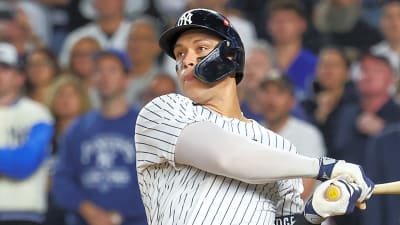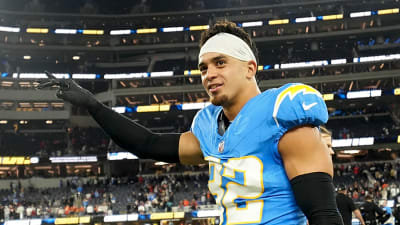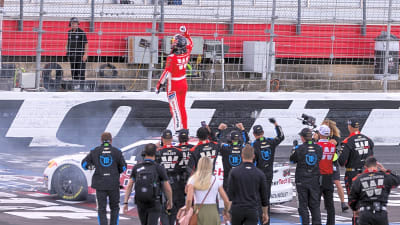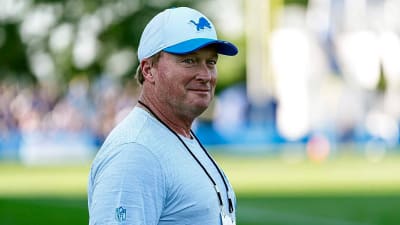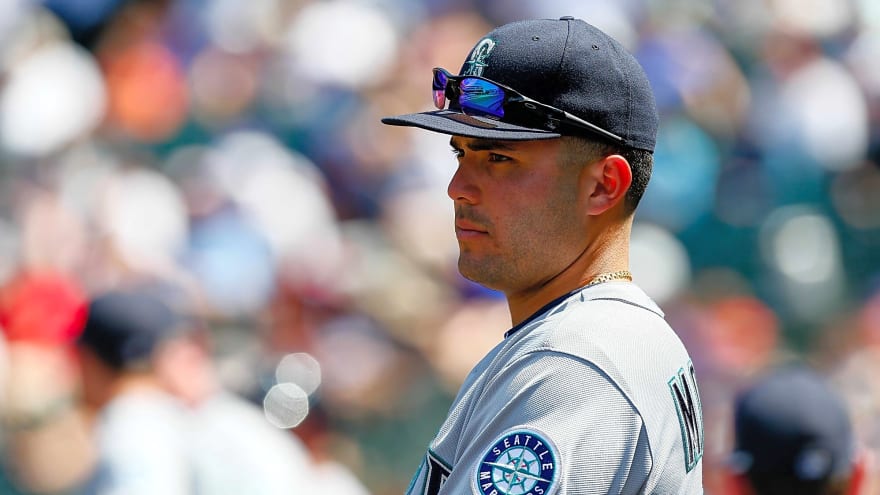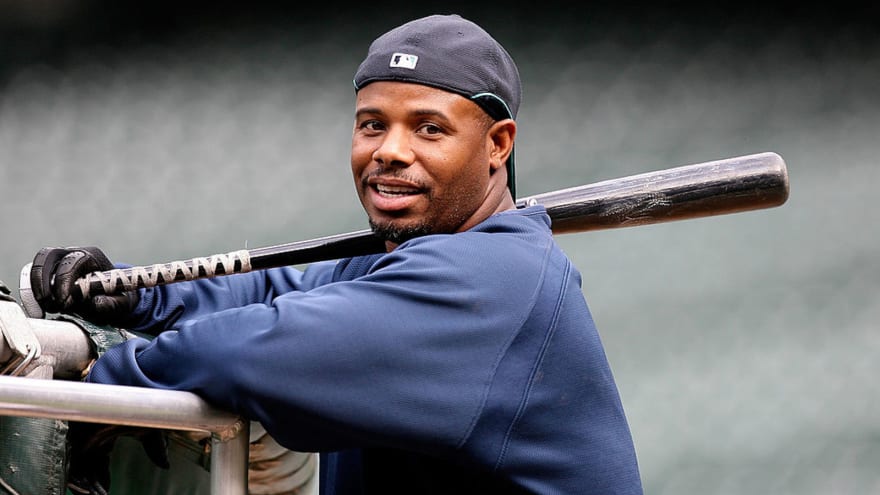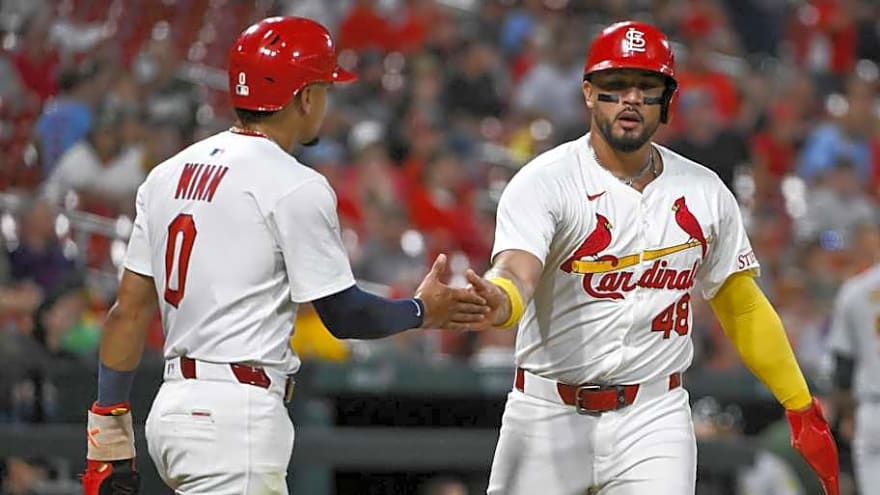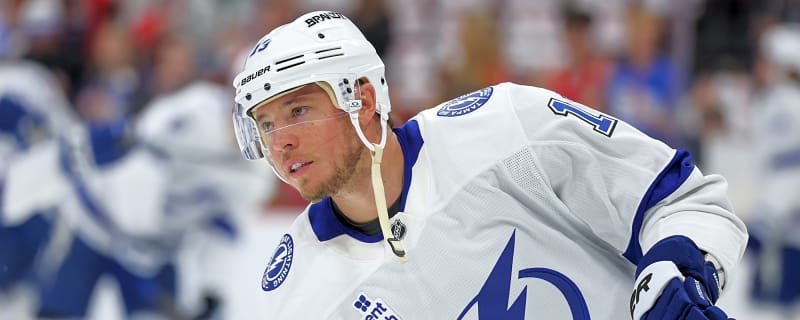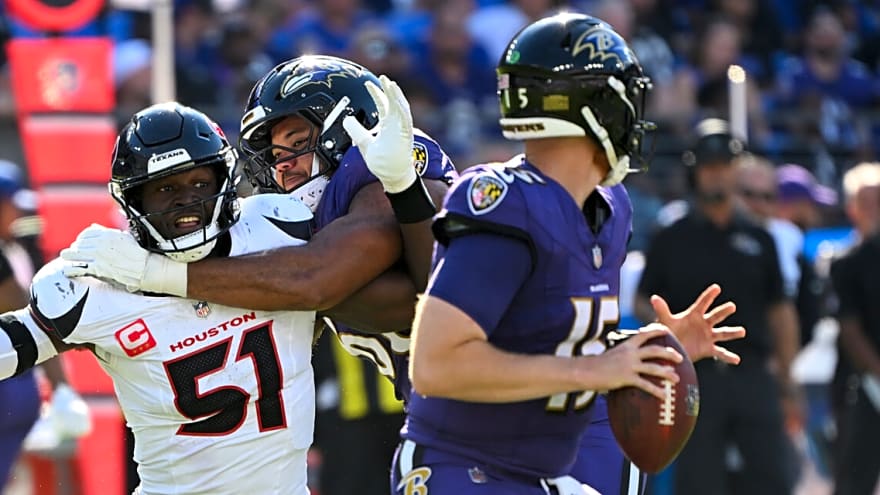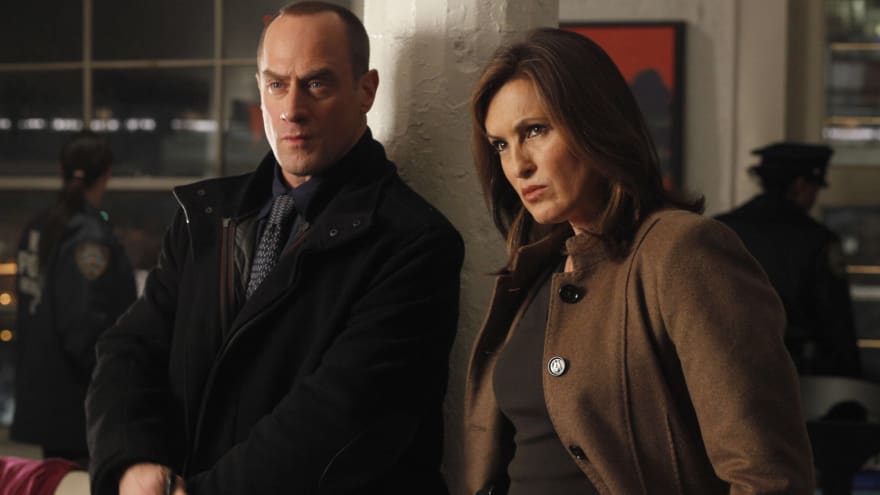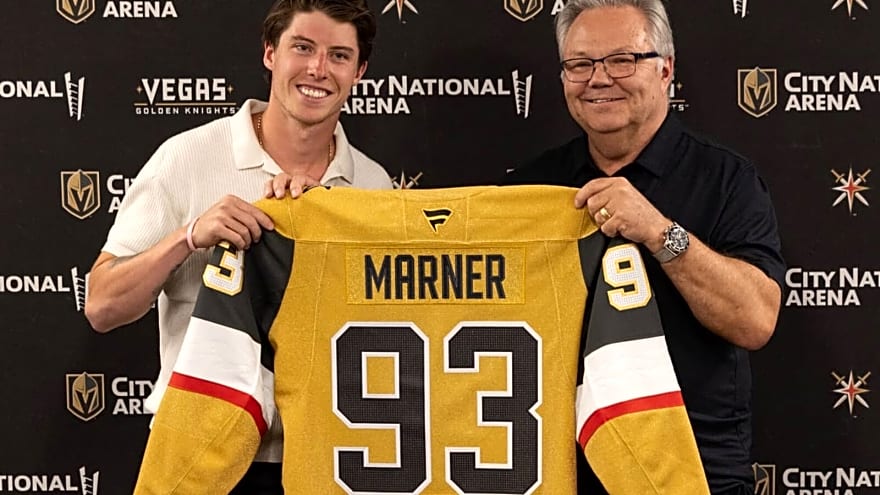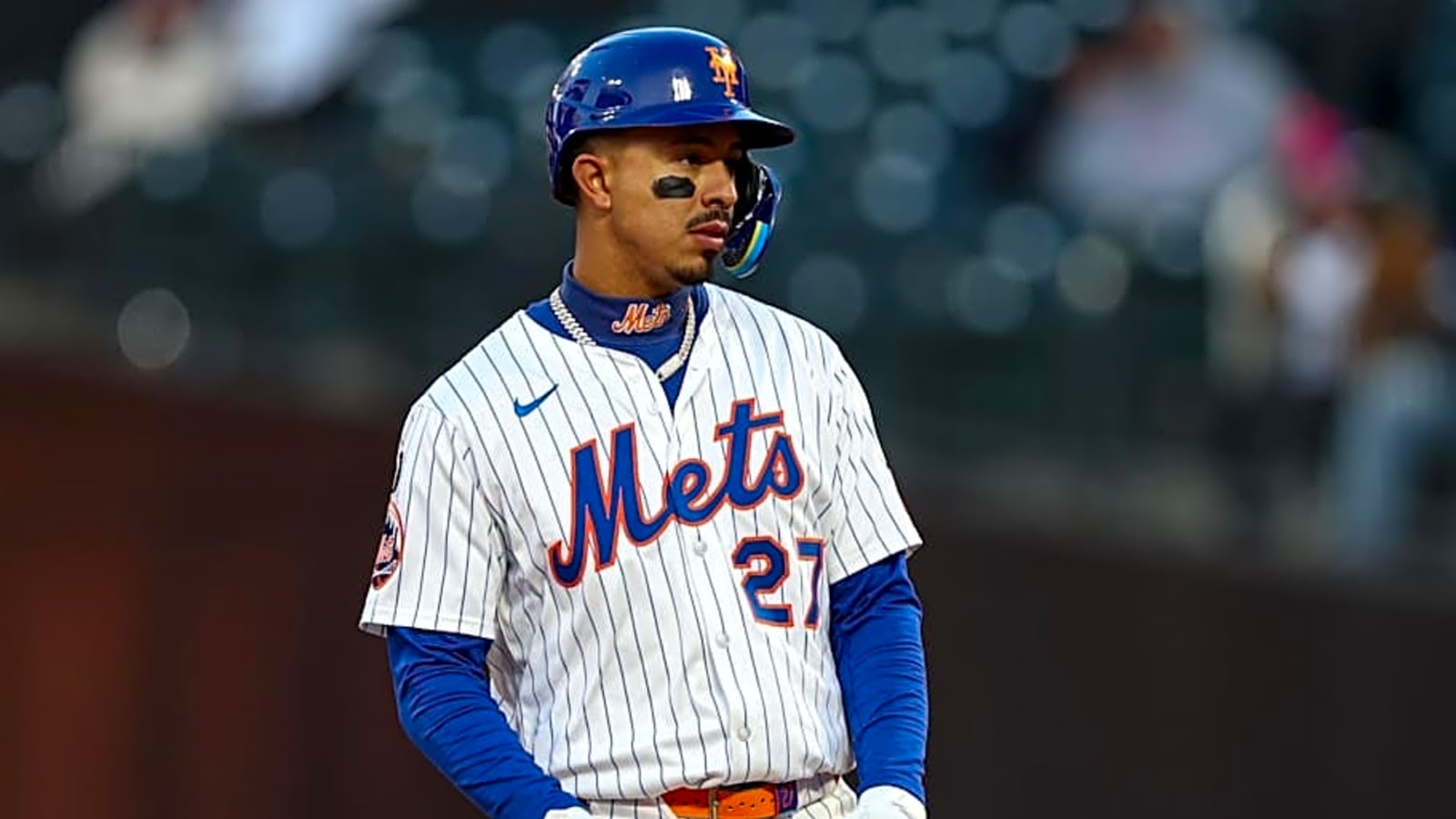
Heading into the New York Mets' April 14 game against the Minnesota Twins, Mets third baseman Mark Vientos had the 14th-worst WAR (-0.4) among all qualified MLB hitters. While he did hit a double and record an RBI during that game, it didn't affect his WAR rating.
Top 15 worst qualified hitters in baseball so far this year pic.twitter.com/QLw5jMligh
— AT (@YankeeWRLD) April 14, 2025
The Mets have managed well enough without Vientos producing on offense, which is shown by their 11-4 record headed into Tuesday's game against the Twins. However, if New York wants to reach their lofty goals for this season, one would imagine that Vientos would need to get back on track.
Bleacher Report's Zachary D. Rymer expects him to do so, which is why he conveyed Vientos' slump as a "Low" concern meter in an April 15 article.
"One of the remarkable things about Mark Vientos' 2024 breakout is just how consistent he was. His OPS never got lower than .837, if you can believe it," Rymer wrote.
"This is why it feels so weird that he's this cold out of the gate in 2025, with eight hits and no home runs to show for 58 at-bats. The entire Mets' offense has been slow to wake up, sure, but this is something else.
"Yet this is also a case where there's an apparent method beneath the madness," he continued.
Big hit for Mark Vientos. He had been 1-21 with RISP thus far this season
— Joe DeMayo (@PSLToFlushing) April 15, 2025
This was vintage Vientos, ripping a fastball 104.1 mph the other way pic.twitter.com/Cp7nljibJc
"Vientos is bordering on being too passive on in-zone pitches, but he's lopped a big chunk off his 2024 chase rate and has benefited accordingly. He only has four more strikeouts (13) than he does walks (nine) after whiffing 102 more times than he walked in 2024."
Rymer concluded by writing, "Only 33.3 percent of Vientos' batted balls have been 95 mph or above, but his average exit velocity is a sturdy 90.0 mph and he's getting the ball in the air more often than not. It'll do for a sign that he hasn't sacrificed power after hitting 27 homers last year."
In other words, it seems that there's a light at the end of the tunnel for one of the Mets' most lethal offensive weapons.
More must-reads:
- Former Yankees, Mariners prospect hospitalized following motorcycle crash
- Yankees make history in Game 3 comeback against Blue Jays
- The 'MLB playoff debut strikeouts leaders' quiz
Breaking News
Trending News
TODAY'S BEST

Yankees Nation Turns On Aaron Boone As Anthony Volpe Gamble Sparks Fear After Paul Goldschmidt Call
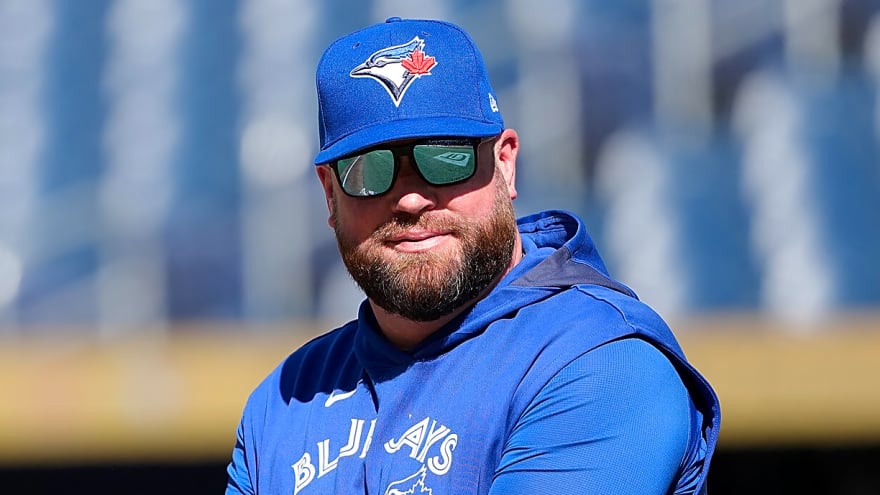
Blue Jays make questionable decision for Game 4 starter
After taking a commanding 2-0 lead in the American League Division Series over the New York Yankees, the Toronto Blue Jays failed to complete the sweep after a historic comeback from the Yankees. After pulling their starter, Shane Bieber, after 54 pitches in 2.2 innings in Game 3, the Blue Jays' bullpen failed to hold things together. Now, they'll turn to their bullpen to try to clinch the series in Game 4. John Schneider makes a questionable decision on Blue Jays' Game 4 starter Deciding to go with their bullpen for Game 4 to help advance them into the American League Championship Series, Schneider and the Blue Jays will rely on Louis Varland to start things off for the Blue Jays, with MLB.com’s Keegan Matheson confirming Varland will be the opener. It's worth noting that Varland gave up a pivotal, game-tying home run to Aaron Judge in Game 3. The Blue Jays acquired Varland and first baseman/designated hitter Ty France from the Minnesota Twins at the trade deadline. Varland had performed well in this series (1.2 innings, one hit) before Judge's devastating blast. Varland picked up a blown save and a loss courtesy of Judge's homer while seeing his postseason ERA balloon from 0.00 to 6.75. The Yankees could get out to an early lead off Varland It's fair to question the Varland choice. Not only is he coming off a disastrous appearance, he has also appeared in each of the first three games of the series, giving the Yankees ample opportunity view and get a feel for his stuff. Of course, he'll also have to face the top of the Yankees lineup, including Judge, who is 7-11 (.636 batting average) with five RBI in the series. Judge, in addition to being scorching hot in the ALDS and delivering the big blow in Game 3, has an excellent track record in elimination games. He has six home runs in elimination games, tying Boston Red Sox legend David Ortiz for the most in MLB postseason history, per MLB Stats. Varland made one previous appearance as an opener for the Blue Jays, against the Red Sox on September 25 when he went 2.0 innings and struck out three. Getting out a lead early will be key to helping rookie right-hander Cam Schlittler settle in and replicate his performance against the Red Sox in the wild-card round, where he pitched eight innings and struck out 12.
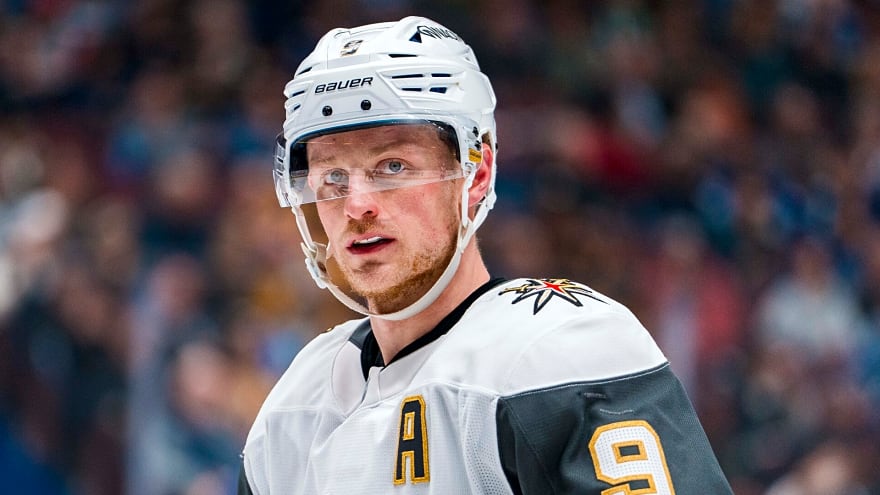
Golden Knights to sign star center to eight-year extension
The Vegas Golden Knights are expected to sign star center Jack Eichel to an eight-year, $108M contract extension, per the Vegas Review-Journal’s Danny Webster. The move was first reported by TSN’s Darren Dreger. Weber adds that the deal is believed to carry a $13.5M cap hit. On a day when the Winnipeg Jets extended star winger Kyle Connor, the Golden Knights have still found a way to steal the show. Eichel’s extension was long anticipated, both for his impact on the Golden Knights’ roster and the intricacies of how Vegas would fit the deal in alongside the $12M cap hit of Mitch Marner. That question has now been answered, with Vegas locking up the tandem through the next eight seasons for $25.5M each season. Landing a max-term extension with Eichel before he has a chance to play alongside 100-point scorer Marner could prove lucrative for the Golden Knights. Eichel had a career year last season, setting career-highs with 94 points and a plus-32 in 77 games. It was a major leap over the 31 goals and 68 points that Eichel managed in 63 games of the 2023-24 season — and the 66 points he scored in 67 games of the 2022-23 campaign. It seems the top center simply needed to ease into his starring role in Vegas after going through a true saga with the Buffalo Sabres. Buffalo drafted Eichel second overall in 2015, properly dubbing him second-fiddle to Connor McDavid’s historic draft season. Despite that seat, Eichel boasted plenty of reason for excitement in his own right and seemed to single-handedly will Boston University to a National Championship loss in his draft year. He brought that team-leading drive straight into the NHL, marked by 24 goals and 56 points in 81 games of the 2015-16 season. That remains the most a Sabres rookie has scored since the 1980s. Even better, Eichel matched it in fewer games of his sophomore season, with 24 goals and 57 points in 61 games. But that quickly became Eichel’s M.O. He was oft-injured, but proved to be the undeniable star of Buffalo’s lineup when healthy. He reached at least 25 goals in each of his next three seasons in Buffalo, and even showed his strength with 82 points in 77 games of the 2018-19 season, when the Sabres collectively only won 33 games. The tension between a struggling club and its productive star reached a peak as the 2020s rolled around — and a breaking point when the two sides couldn’t agree on how Eichel should handle an unprecedented shoulder surgery in 2021. Sabres traded Jack Eichel to Golden Knights in 2021 After multiple bouts back and forth and a seemingly endless run of trade rumors, Buffalo decided to trade Eichel to Vegas in November 2021. In return, the Sabres received Alex Tuch, Peyton Krebs, the draft pick used on Noah Ostlund (2022: 1-16) and a second-round pick traded to Minnesota. All three players remain with Buffalo. Meanwhile, Eichel quickly received the surgery he had preferred upon arriving in Vegas. His 2021-22 campaign was limited to 34 games due to injury, but he recovered in time for the 2022-23 season. Routine injury still marred his year, but he stayed healthy long enough to lead Vegas on a run to the Stanley Cup in 2023. He led the Golden Knights and the postseason in scoring with a dazzling 26 points in 22 games — though the Conn Smythe trophy would go to his goal-scoring teammate Jonathan Marchessault. Regardless, Eichel’s push towards a Cup win showed the Golden Knights, and the hockey world, that he had the grit to be the star center on an NHL champion. He has reaffirmed that thought with 17 points in 18 playoff games since Vegas lifted the Cup. Extension should give Jack Eichel confidence boost With this move, Vegas will place a strong bet on Eichel’s ability to hang onto that role through his 30s. More importantly, they’ll give him a big boost of confidence as he heads into his age-29 season. Eichel has never played alongside a 100-point scorer, nor broken that ceiling himself, but he’ll get his first chance this season. Like Eichel, Marner struggled to crack the century mark for multiple seasons, recording at least 85 points three times between 2021 and 2024. He even reached 99 points in 2022-23. But it wasn’t until last season, when he scored 27 goals and 102 points in 81 games, that Marner was finally able to achieve the feat. In a rare shift, he has now changed teams following a career year and will look to keep the good times rolling on a recent Cup winner. The top of Vegas’ offense is truly a stacked group, featuring Mark Stone, Tomas Hertl, William Karlsson, Pavel Dorofeyev and Ivan Barbashev to support Eichel and Marner. The heights of the lineup seem hard to place, and if all goes well, Vegas has ensured they can keep the band together with a pair of long-term extensions for their two stars.

Bengals' Zac Taylor explains shocking Joe Flacco move for Packers game
Roughly 24 hours after outsiders learned that the Cincinnati Bengals were acquiring veteran quarterback Joe Flacco from the Cleveland Browns, Bengals head coach Zac Taylor confirmed that Flacco will start over Jake Browning when 2-3 Cincinnati plays at the Green Bay Packers (2-1-1) this coming Sunday. While speaking with media members, Taylor explained that somewhat surprising decision. Why Zac Taylor believes he can get Joe Flacco "up to speed quickly" "He's already spent a lot of time meeting with us, getting up to speed, so I feel really good about where he's at," Taylor said about Flacco, per Dave Clark of the Cincinnati Enquirer. "You just know him. ...Very comfortable with his style, concepts he's good at, things that we do. All of the terminology, there's a carryover, more so than I would have anticipated. So I feel like we can get him up to speed quickly." Flacco lost three of four September starts with the Browns before the Super Bowl XLVII Most Valuable Player was benched in favor of rookie Dillon Gabriel. According to Pro Football Reference stats, Flacco began Wednesday ranked last in the NFL among qualified players with a 60.3 passer rating for the ongoing season. Additionally, he's 28th out of 32 signal-callers with a 36.7 adjusted QBR. That said, Flacco is a 40-year-old who has seen every defensive concept an opposing coordinator could and will throw his way. Back on Sept. 21, he helped the Browns earn a 13-10 win over the Packers in downtown Cleveland. Zac Taylor likes that Joe Flacco faced this Packers defense in September "It's different than a young quarterback coming in, trying to learn the system and understand what a defense is trying to do to try to challenge you," Taylor added about his decision to start Flacco versus the Packers. "Not only that, but he's played Green Bay this year, so he's already gone through a week of prep. ...Now the communication and the weekly rhythm is maybe different and unique, but he's already prepared for this opponent. So he gets a chance to refresh himself on that, while at the same time just learning our system and our terminology...and how we operate." Shortly after Taylor made his comments, ESPN BET had the Bengals listed as massive 14.5-point underdogs against Green Bay. Perhaps that line and the fact that he was discarded by Cleveland will give Flacco some extra motivation heading into the showdown that will take place at Lambeau Field.

Cowboys coach makes it sound like personnel change some were expecting won't happen ahead of Week 6

Who Is Bradford M. Freeman? All About $50M Stanford Donor’s Football Career Before & With the Cardinal
Stanford football just got a massive lifeline, and it’s coming from someone who knows exactly what it’s like to suit up for the Cardinal. Bradford M. Freeman, a 1964 graduate who came to Palo Alto on a football scholarship six decades ago, just dropped $50 million on his alma mater’s struggling football program, the biggest individual gift in Stanford football history. President Jonathan Levin didn’t mince words about what this means: “This is a game-changing gift for Stanford. It will help us to recruit top talent and compete at the highest level. Brad’s generosity and commitment to football will benefit our entire athletics department, as excellence in football will support success across all 36 varsity sports.” General manager Andrew Luck called the donation a “bridge to a sustainable future,” and it could not have come at a better time. Stanford is trying hard to navigate the modern football reality, which is marred by NIL and direct payments to student-athletes. The money donated by Freeman would be of massive help in funding institutional NIL support and will also help in creating five new football scholarships. Who Is Bradford M. Freeman? Freeman isn’t just another wealthy alum writing checks—he’s been Stanford’s most loyal football benefactor for nearly 40 years. Born and raised in Fargo, North Dakota, he was a star high school football player who earned a scholarship to Stanford, graduated in 1964 with an economics degree, and then headed to Harvard Business School for his MBA. Freeman is not your regular donor. He has been Stanford’s most loyal football benefactor for nearly 40 years now. He was born and raised in Fargo, North Dakota, and was a star high school football player who earned a scholarship to Stanford. He graduated in 1694 with an economics degree and then went on to do an MBA from Harvard Business School. In 1983, he co-founded Freeman Spogli Co., a private equity investment firm, with his longtime friend and business partner Ron Spogli, who also went to Stanford (class of 1970). Freeman’s philanthropic footprint at Stanford is enormous; he served 10 years on the Board of Trustees starting in 1995, and in 2005, he and Spogli jointly donated $50 million to endow the Freeman Spogli Institute for International Studies, Stanford’s hub for international affairs research. His giving has touched everything from undergraduate education and fellowships to professorships and the Bing Overseas Studies Program. “I remain grateful for the opportunities that my Stanford football scholarship gave me and for all the ways that the university impacted the trajectory of my life,” Freeman said about his latest gift. All About His Football Career Here’s the funny thing about Freeman’s football career at Stanford: he barely played. Despite being a high school standout in North Dakota, his Cardinal career didn’t exactly light up the stat sheet. In a brutally honest 2014 interview, Freeman joked, “I went from outstanding player of the year to setting a record at Stanford for the most minutes not played in four years.” But that lack of playing time did not impact the love he had in his heart for his alma mater at all. Even though he spent most of his football journey with the Cardinals on the bench, that football scholarship opened doors that changed the trajectory of his life. After his education, he went on to build a private equity empire. This is how college athletics shape a player’s career. Football was an option, but due to Stanford’s quality education, it wasn’t the only option, and now the institution is reaping the rewards of its hard work. What Does Freeman Do Now? These days, Freeman is a private equity titan and one of Stanford’s most influential donors, though he’s clearly never stopped being a football fan at heart. As general partner of Freeman Spogli Co., the firm he co-founded more than 40 years ago, he’s built a successful investment banking career that’s given him the resources to give back in extraordinary ways. His commitment to Stanford football dates back to 1988, when he endowed the nation’s first head coaching position, the Bradford M. Freeman Director of Football, currently held by interim coach Frank Reich. That groundbreaking move helped inspire the endowment of other coaching positions across all 36 of Stanford’s varsity sports. Stanford will honor his latest gift by naming the tunnel where players and coaches enter Stanford Stadium as the Bradford M. Freeman Tunnel and naming a gate the Bradford M. Freeman Gate. He’ll also be recognized as one of six Trailblazer honorees in Stanford’s Home of Champions. Freeman’s hope is simple but ambitious: “I hope my gift will herald a new era of excellence for Stanford football and help the university address the new financial demands of competitive college athletics.” For a program that’s gone 3-9 in each of the past four seasons and is desperately trying to recapture its 2010s glory under Harbaugh and Shaw, Freeman’s $50 million might just be the game-changer they need.
Customize Your Newsletter
 +
+
Get the latest news and rumors, customized to your favorite sports and teams. Emailed daily. Always free!

